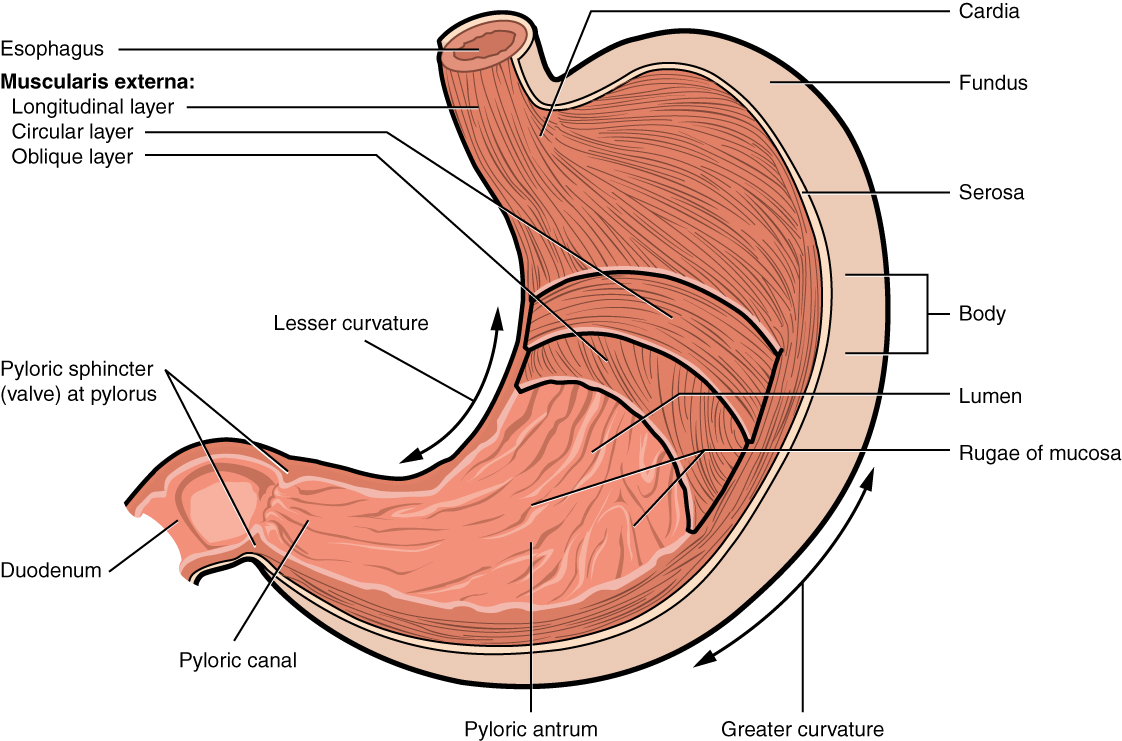| << Chapter < Page | Chapter >> Page > |
Chemical digestion really gets underway in the stomach. It lies immediately inferior to the esophagus, the stomach links the esophagus to the first part of the small intestine (the duodenum). It can be a highly active structure, contracting and continually changing position and size. These contractions provide mechanical assistance to digestion. The empty stomach is only about the size of your fist, but can stretch to hold as much as 4 liters of food and fluid, or more than 75 times its empty volume, and then return to its resting size when empty.
Popular culture tends to refer to the stomach as the location where all digestion takes place. Of course, this is not true. An important function of the stomach is to serve as a temporary holding chamber. You can ingest a meal far more quickly than it can be digested and absorbed by the small intestine. Thus, the stomach holds food and delivers only small amounts into the small intestine at a time. Foods are not processed in the order they are eaten; rather, they are mixed together with digestive juices in the stomach until they are converted into chyme, which is released into the small intestine.
As you will see in the sections that follow, the stomach plays several important roles in chemical digestion, including the continued digestion of carbohydrates and the initial digestion of proteins and fats. Little if any nutrient absorption occurs in the stomach, with the exception of the negligible amount of nutrients in alcohol.
There are four main regions in the stomach : the cardia, fundus, body, and pylorus ( [link] ). The cardia (or cardiac region) is the point where the esophagus connects to the stomach and through which food passes into the stomach. Located inferior to the diaphragm, above and to the left of the cardia, is the dome-shaped fundus . Below the fundus is the body , the main part of the stomach. The funnel-shaped pylorus connects the stomach to the duodenum. connects to the body of the stomach. The narrower end is called the pyloric canal , which connects to the duodenum. The smooth muscle pyloric sphincter is located at this latter point of connection and controls stomach emptying. In the absence of food, the stomach deflates inward, and its mucosa falls into large folds called rugae .

The convex lateral surface of the stomach is called the greater curvature; the concave medial border is the lesser curvature. The stomach is held in place by the lesser omentum, which extends from the liver to the lesser curvature, and the greater omentum, which runs from the greater curvature to the posterior abdominal wall.

Notification Switch
Would you like to follow the 'Digestive system' conversation and receive update notifications?